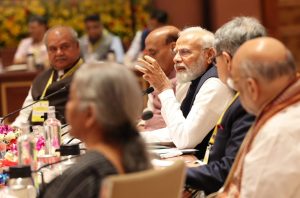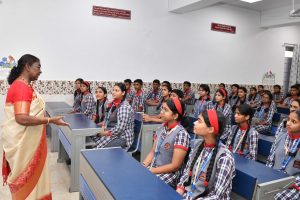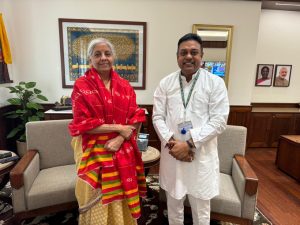BJP nets three dynasties; Opposition at crossroads

By Manish Anand
New Delhi, July 5: Ahead of the 2018 Madhya Pradesh Assembly elections, Prime Minister Narendra Modi had begun hand-holding the Bharatiya Janata Party to embark on dynasty-annihilation journey, and since then three family-owned political outfits have been humbled.
Modi’s anti-dynastic ire was first directed against the son of the BJP national general secretary Kailash Vijayvargia after he launched himself into ‘batting’ the municipal staff in Indore, Madhya Pradesh.
Afterwards, the then Rajasthan Chief Minister Vasundhara Raje came in the line of fire, as the BJP chief at that time Amit Shah sought to groom alternative leadership in the state, as ‘Maharani’ had brought in her son Dushyant Singh in politics and sent him to the Lok Sabha.
They were test cases for the BJP within the party.
The 2020 Bihar Assembly elections provided the BJP opportunity to experiment its might to subsume family-owned political party.
The Lok Jan Shakti Party (LJP) wasn’t bothered about the democratic niceties, as the fact that Ram Vilas Paswan, the party founder, had raised the party from a state when he rode a bicycle in 1969 gave him the legitimacy to make it an all family affairs for the party.
Paswan’s bothers, son, nephews became MPs, MLAs or held party positions, and some others were “accommodated” when the party found favourable elections.
Ram Vilas Paswan was critically ailing ahead of the Bihar polls, and his son Chirag Paswan was on a high, as he blundered away his political turf and the flock of the MPs to the BJP after the poll rout.
Except for Chirag Paswan, the whole stock of the LJP MPs have gone into the NDA as a new political party. That outfit will work on whatever legacy Ram Vilas Paswan left for the core constituency of his party in Bihar.
The Shiromani Akali Dal (SAD) (Badal) panicked at the enactment of the four farm laws, which sent the farmers from Punjab running to the border areas of Delhi, with their sword-wielding Nihangs in tow.
The SAD snapped its ties with the BJP.
The BJP worked with the former Chief Minister of Punjab Captain Amarinder Singh in the state Assembly elections that the Aam Admi Party ran away with over 80 per cent of the seats, making all rivals political pygmies in the state.
The SAD (Badal)-BJP alliance was of the Jat Sikh and Hindus. The SAD thought to compensate the loss of the BJP with an alliance with the Bahujan Samaj Party, hoping that over 25 per cent Dalit vote base would make up for the loss.
The SAD (Badal), another party which has everybody in the Badal family in politics, bagged a little over 16 per cent vote share in Punjab Assembly polls.
In the subsequent, Sangrur Lok Sabha bypolls, the SAD (Badal) bagged just about 6.5 per cent vote share.
Another political dynasty in the Indian politics, which ruled the Punjab politics for decades, was humbled and sent to the political margins.
If Ram Chandra Paswan snatched a dynasty party, the LJP from the son of the founder of the outfit, Eknath Shinde did it on a larger scale in Maharashtra.
Like Ram Chandra Paswan, Shinde also walked away with most of the legislative strength of the party and also the legacy of the founder of the Shiv Sena.
The parties which still are seen to be ‘owned’ by the ruling families are the Samajwadi Party in Uttar Pradesh, Dravida Munnetra Kazhagam (DMK) in Tamil Nadu, Telangana Rashtra Samithi (TRS) in Telangana, National Conference (NC) in Jammu and Kashmir, Nationalist Congress Party (NCP) in Maharashtra, Biju Janata Dal (BJD) in Odisha, and a few in the North-eastern states.
These parties constitute much of the strength of the Opposition.






